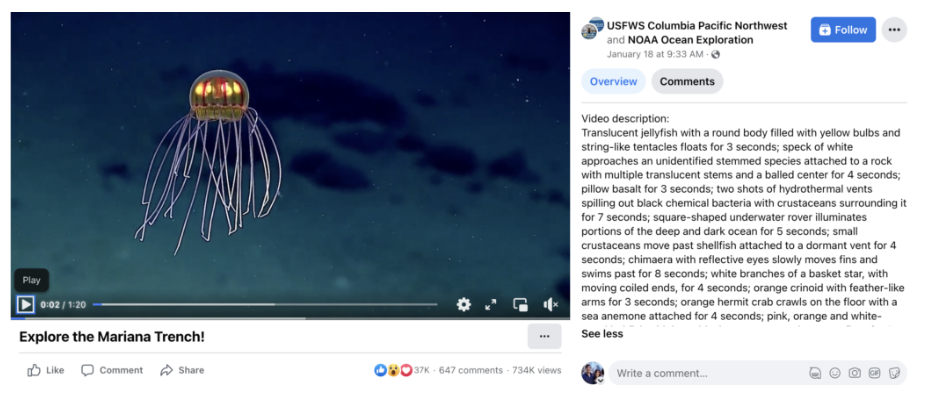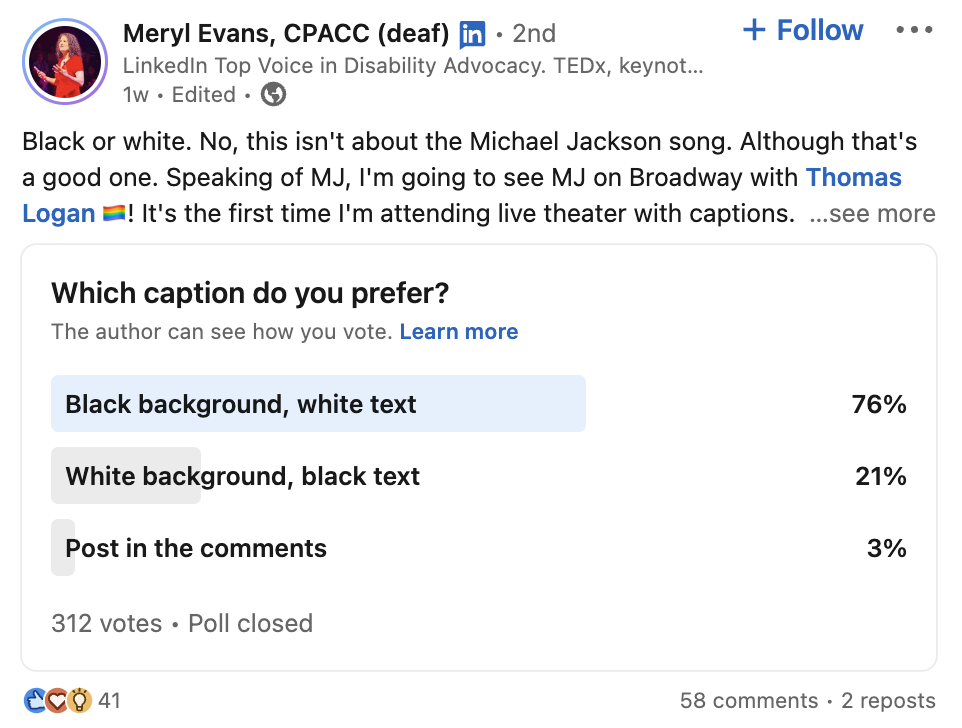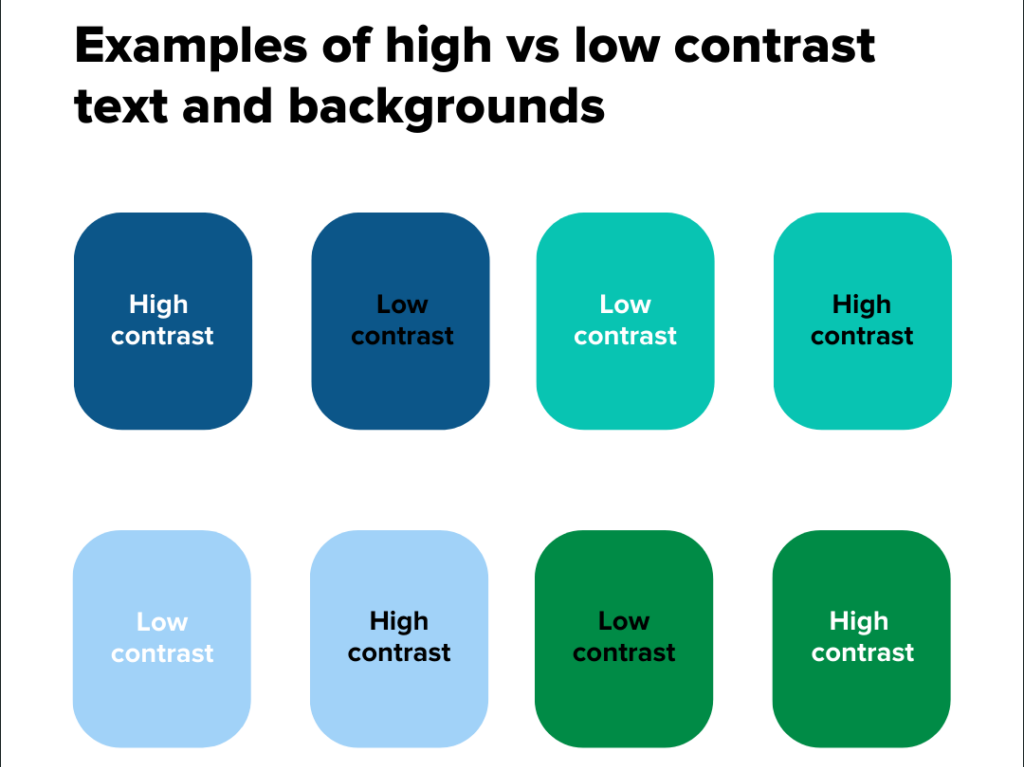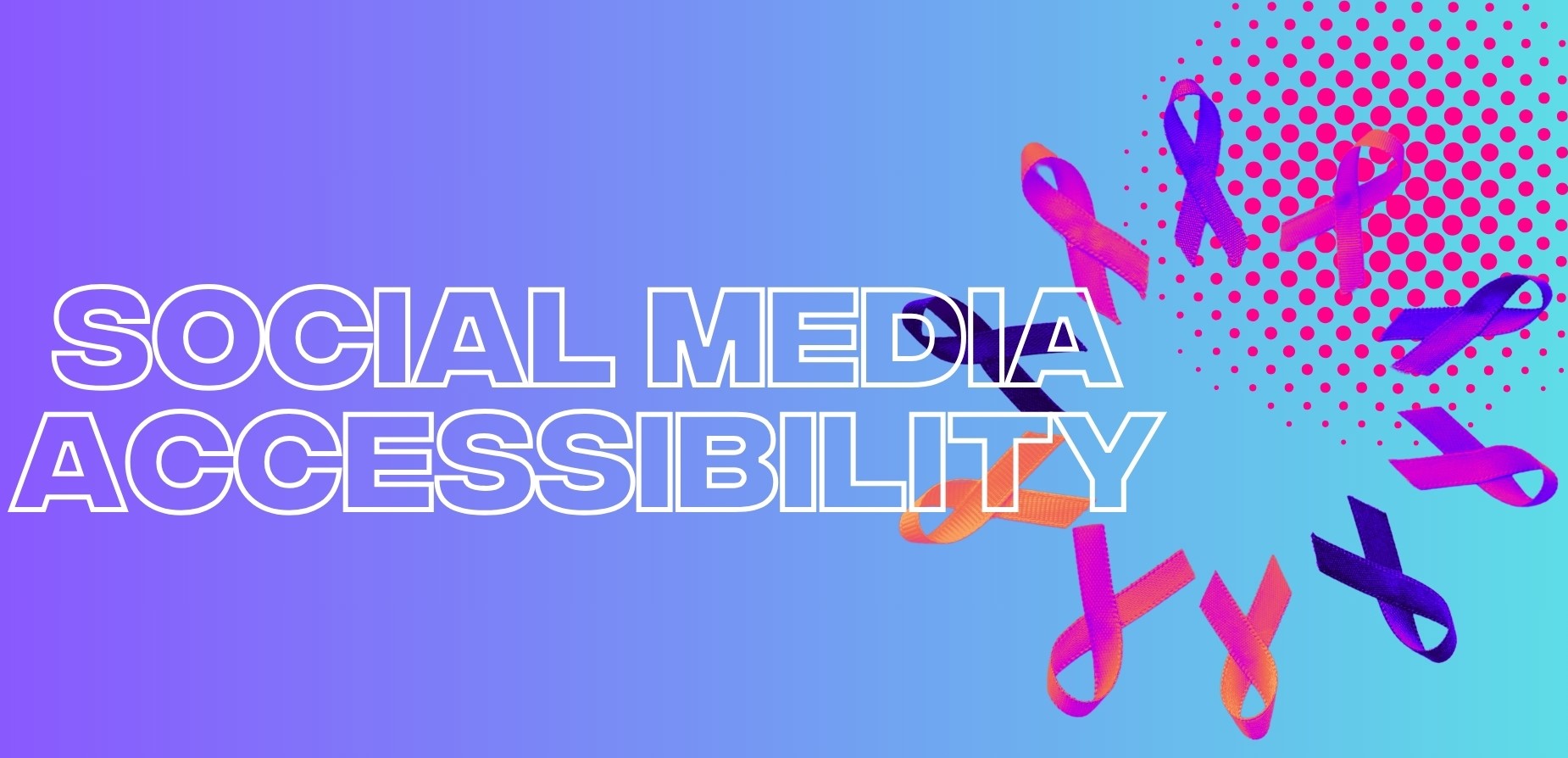Social media has the power to bring the masses together but, it could also be a means to exclusion if you do not use social media accessibility best practices. Scrolling through social media platforms is a no brainer; we can log in while watching TV, throughout the day and even during meetings. However, scrolling through social media posts is not a universal experience. Partaking in social media can be frustrating to people who use accessibility aids and those who need additional contrast in visuals and text.
The good news is that you have the power to make your social media platforms inclusive for more of your audience. That puts your brand in the enviable position of boosting social media engagement. The following article provides practical insights on how to enhance social media accessibility and best practices for success.
What is Social Media Accessibility?
Social media accessibility refers to the practice of designing and developing social media content and posts to ensure a smooth, inclusive experience for everyone.
Non-accessible content can cause all kinds of frustrations and disruptive experiences. For example, videos with a lot of background noise that do not use captions. Creating more accessible social media content is a win-win for all the parties involved including brands, marketers and the audience.

According to one expert, social media accessibility means making sure that everyone can access your content regardless of their cognitive or physical abilities. Thus, every brand and marketer should be proactive in making accessibility part of their social media strategy and apply it to their content every day.
The Importance of Accessibility in Social Media
According to a recent study by Pew Research, 62% of adults with disability own a laptop and, 72% use smartphones. That means without social media accessibility, you risk alienating members of your audience. The more accessible your social media content is, the more people that will be able to access and engage with it. Inclusive best practices can directly impact your communication efforts and affect the number of people you reach with your digital content.
Thanks to technologies such as screen readers and sticky keys, it has become much easier for people with disabilities to be part of online conversations. However, technology also requires brands and marketers to follow accessibility best practices to ensure an inclusive experience. Marketers should be concerned about the experiences that their followers have whenever they engage with their brand on social media.
Social Media Accessibility Best Practices
Achieving social media accessibility is a relatively easy feat, provided you know where to begin. The following are proven best practices and strategies on how to get started.
Add alt text to images
Alt text or alternative text is a short and informative description of an image that screen readers use to describe it on social media. Here is a good example of what an alt text looks like on X, formerly Twitter.

Adding alt text to your images on social media is easy but, quite underused. Sometimes, it is used incorrectly altogether. However, it is common to see some brands or accounts using alt text to hide unhelpful Easter eggs, calls to action and image credit.
One of the questions you need to ask yourself when adding alt text to your images is, what is the most important information about your image that you want others to know. Think about what you are trying to accomplish with your content. Make sure the alt text is descriptive enough to make your image accessible in a way that helps you to achieve those objectives and properly informs your audience.
The following are best practices for boosting social media accessibility with alt text;
- Keep in informative but, succinct: The standard is 125 characters but, you should not be afraid to write longer to paint a clearer picture for images and graphics.
- Include keywords: Alt text is a fundamental element in SEO, so, include relevant keywords.
- Provide content in your alt text.
- Skip writing ‘’picture of’’ or ‘’image of’’
Videos do not usually have the provisions for alt text, so, it is advisable to add descriptions to the captions or threads to put your video content into perspective. The following video by US Fish and Wildlife Services is a good example, providing an in-depth and extremely informative description of their video.

Auto-generate Alt Text Across Platforms with AI
New innovations in artificial intelligence can streamline your alt text workflows, with the goal of increasing its adoption and social media accessibility across platforms. A good example is the Generate by AI Assist, accessible on sprout’s publishing platform. It offers detailed alt text suggestions for posts on multiple social media platforms including Facebook, X and LinkedIn. Then, you can use the generated alt text as it is or edit it to your needs.
Make Texts More Accessible
Playing around with typography on your social media or web posts can seem quite trendy. However, fancy fonts can also be a nightmare for screen readers. Here are some best practices to help you ensure more inclusive texts.
- Format hashtags correctly: Hashtags are here to stay and you should not be afraid to use them. However, go for hashtags that are easier to read for screen readers and those with ‘CamelCase’, where you capitalize the first letter if every word in the hashtag. So, instead of #welovesuperiorsocialboost, write #WeLoveSuperiorSocialBoost
- Avoid all caps: All caps make it harder to identify words by their shape, and screen readers may read them as acronyms, instead of full words. For example, TEXT vs text.
- Mind the font color: This is more relevant for landing pages or blog posts linked to your social media platforms. Make sure that the font and hyperlink colors are more accessible.
- Spell out acronyms first to help screen readers and those who are not familiar with them.
- Write in plain language: Avoid using jargon or very technical language to make your posts more accessible to people who are new to your industry, non-native speakers or those who experience cognitive impairments.
- Provide the most important information first: That helps with boosting social media accessibility and getting your point across sooner and with clarity.
- Use clearer and short sentences
- Use special characters sparingly and correctly: Screen readers are not conversant with all special characters. Besides, including too many special characters in your text can be confusing to those using screen readers.
Add Closed Captions and Subtitles to Videos
Adding closed captions and subtitles should be an essential part of every video marketing strategy. Captions make videos accessible for a wide range of users including those with hearing loss or cognitive abilities, people learning a new language and others who simply do not want to wake their sleeping partners.
Captions are also increasingly popular among millennial and Gen Z content consumers. Besides, captions can also give your content an SEO boost. They are always a win when included in your videos. Here are some best practices for enhancing social media accessibility with captions;
- Go beyond what is being said: Subtitles write out what is said but, closed captions provide additional information for context such as sounds in the background or music being played.
- Create high contrast captions: Make sure that your captions are visible against your background, like white text against a black highlight or vice versa.
- Make sure captions are not covered by platform content, especially important in TikTok and Reels formats.
A past LinkedIn poll asked the audience whether they preferred captions with white text against a black backdrop, black text against a white background or a post in the comments. 76% of the participants voted for black background and white text.

Use AI to Generate Video Subtitles
Adding closed captions to your videos on social media is essential to boosting social media accessibility and offers several other benefits. However, it can also be quite time intensive. That is where generative AI comes in to help you with creating high quality subtitles easily.
AI eliminates the need for a manual and time-consuming process. Once you have generated the subtitles, you can edit them for accuracy. You can also preview the video with subtitles overlaid to ensure a seamless and professional appeal. Some AI tools even support multiple languages.
Make Visual Content Accessible
Boosting social media accessibility goes beyond just using alt text, images and videos. There are various ways that you can ensure a better experience with your visuals. Here are pointers on how to create accessible visual assets.
- Avoid packing graphics with texts: Limit the information on your graphics and link to blog posts or landing pages for a full statement, full event info or a full blog post.
- Include warnings for people with photosensitivity: If you post videos with strobe effects or flashing lights, include a warning and create pause before the content plays. For example, TikTok includes warnings for content that may trigger unpleasant or dangerous effects for some people.
- Watch out for viral trends that are inaccessible: Trends that rely on unique post formatting, like the handshake trend below, can be fun to leverage. However, they are not friendly to assistive technologies. Before leveraging trends, consider how they would be read by screen readers and, limit using these trends, or avoiding them altogether.
- Don’t use multiple colors to convey meaning: That may exclude those who are colorblind, and may be impacted by cultural differences.
- Create high contrast visuals: High contrast makes graphics easier to interpret. Make sure that the colors in your graphics have a 4.5:1 contrast will help make the text on your graphics more visible to all.

Use Inclusive Language
It can be all too easy to perpetuate bias, stigmas and marginalization in the words and phrases that we may have gotten used to every day. Inclusive language is what it sounds like; using language that is inclusive and respectful and free or bias, discrimination or exclusionary terms. Using it in your communications including, job descriptions and social media posts, helps everyone to feel like they are addressed, included and welcome to participate.
Inclusive language takes education and self-checking. However, it is important to start now and make it a part of your day-to-day process. The following are tips on how to drive social media accessibility with inclusive language;
- Avoid bias in your writing: For instance, using the word ‘normal’ as a comparison group can be ablesit, or put one group in ‘the norm’. It is also biased to use gendered language.
- Use people-first language: For example, saying ‘’a person with a disability’’ vs ‘’a disabled person.’’
- Watch out for offensive language: language keeps evolving, so, keep an eye out for now-outdated phrases, preferences or sayings and cultural appropriation in your language.
The Bottom Line
Do not let the fear of perfection hold you back from making your social media posts more accessible and inclusive. The first step is the most important task. The sooner you start putting accessibility and inclusive practices into your social media strategy, the better. This article has outlined essential steps and insights to help you ensure social media accessibility.

